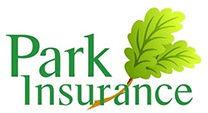It’s not news that any driving instructors who are feeling the pinch are going to want to hear at the moment, but according to a recent study by Green Flag, fewer young people are opting to have lessons with qualified driving instructors.
The Green Flag ‘Driving Behaviour Study’ was carried out to commemorate the road organisation’s 20th anniversary. It found that of the total number of young learner drivers, only 34% are currently choosing to learn with a driving school. Instead, many are opting to be taught by their parents or another road-qualified family member.
According to the study, since 1994 there has been a 25% rise in the number of young people who are being taught by their parents.
The 34% figure of young drivers being taught by a professional is itself down by approximately 16%, from 50% just 20 years ago.
Overall, 77% of parents are involved actively in teaching their children to drive, versus 52% twenty years ago. Mothers in particular are more involved, with 30% teaching their children to drive versus 11% when Green Flag was first established in 1994.
The unfortunate downside to this family-orientated driving tuition however may well be lower pass rates than before, and drivers who are less prepared to face the big world of motoring on their own. First-time pass rates have dropped to 42%, down from 48% in 1994.
What can driving instructors and driving schools do to tempt learners back?
For driving schools concerned about what these trends mean for the future of their businesses and their industry, it may be time for some soul searching. Additional promotional campaigns may well be needed to persuade learners that it’s best to ‘stay in school’.
Such marketing should focus on the benefits of learning with an Approved Driving Instructor (ADI) or Potential Driving Instructor (PDI), such as the many years of experience that they have in teaching people of all ages to drive. The fact that driving schools have dedicated driving instructor insurance to cover any accidental damages that might otherwise hike up their parent’s premium could also be seen as a significant plus.
